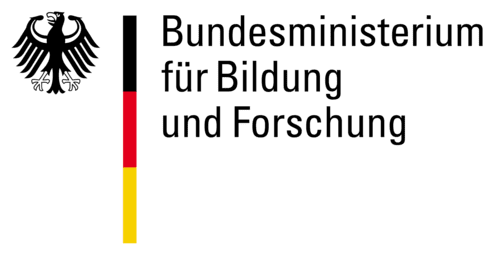
Modular Sensor Systems for
real time Process Control and
Smart Condition Monitoring

Modular Sensor Systems for
real time Process Control and
Smart Condition Monitoring

The German Federal Ministry of Education and Research (Bundesministerium für Bildung und Forschung – ‘BMBF’) has been funding the research project MoSeS-Pro since 2015 as part of the strategic initiative ‘Industry 4.0’.

The German Federal Ministry of Education and Research (Bundesministerium für Bildung und Forschung – ‘BMBF’) has been funding the research project MoSeS-Pro since 2015 as part of the strategic initiative ‘Industry 4.0’.
The objective is to make possible extended status and process monitoring (in real time) through high signal conditioning capacity. In addition to improved sensor functionality it is envisaged to extend signal evaluation on higher-level controls. For instance malfunctions, such as those resulting from wear, are to be detected early by means of smart condition monitoring. That in turn will make it possible to automatically initiate precautionary measures to safeguard the installation and carry out preventative maintenance on the affected machine components.
The objective is to make possible extended status and process monitoring (in real time) through high signal conditioning capacity. In addition to improved sensor functionality it is envisaged to extend signal evaluation on higher-level controls. For instance malfunctions, such as those resulting from wear, are to be detected early by means of smart condition monitoring. That in turn will make it possible to automatically initiate precautionary measures to safeguard the installation and carry out preventative maintenance on the affected machine components.
A further objective is to determine reliable life cycles on the basis of long term data acquisition and by employing machine learning methods. These processes will determine appropriate maintenance intervals for the installed system components. From a technical point of view, a large number of different process signals will be evaluated in real time (for example, path, angle, current, vibration, acceleration, structure-borne noise and so forth) and made available dynamically to any specified system. In particular, it should be underscored in this context that the greater demands placed on resolution, networking and extremely fast signal conditioning represent a huge challenge.
The ambitious project MoSeS-Pro requires the cooperation of experts from numerous and different specialist fields. For instance, novel sensors, high performance electronics, efficient software modules and sophisticated algorithms will need to be developed to achieve the project objectives. The MoSeS-Pro project consortium consists of a number of innovative companies (ZeMA, Festo, ESR Pollmeier, Bosch Rexroth and Sensitec) as well as research institutes (Fraunhofer Institute for Microelectronic Circuits and Systems and the University of Kaiserlautern), who contribute their professional expertise from their respective fields with the aim of jointly mastering the numerous interdisciplinary tasks.
As a leading specialist for signal conditioning and integrating sensor systems CANWAY developed high-performance sensor interfaces within the scope of the MoSeS-Pro project; these act as the central link within the modular sensor system. The interfaces are designed to acquire and condition widely differing signal variables, and then make them available to any specified system in real time.The interface modules are based on modern FPGA technology (Field Programmable Gate Array); they make it possible to easily enhance performance capability and compatibility according to requirements.
As a leading specialist for signal conditioning and integrating sensor systems CANWAY developed high-performance sensor interfaces within the scope of the MoSeS-Pro project; these act as the central link within the modular sensor system. The interfaces are designed to acquire and condition widely differing signal variables, and then make them available to any specified system in real time.The interface modules are based on modern FPGA technology (Field Programmable Gate Array); they make it possible to easily enhance performance capability and compatibility according to requirements.
Depending on requirements it is possible to condition low priority signals as well as high priority signals (for example, extensive filtering, high data transmission rates and complex data transformation) within a single system. One example to mention at this point would be measuring vibration and acceleration. The number and type of interfaces will also be extendable on a modular basis. One focus is placed on the diversity of the signals to be conditioned. The objective is to ensure that it will be equally possible to condition analog signal variables, previously digitized signals (for example CAN bus) as well as radio-based signal transmissions in a single system. In addition to classic sensors there will also be an interface to connect sensors based on XMR sensor principles (X-magneto resistive effect), VIS/IR (visible infrared) and self-sufficient sensor systems (energy harvesting).
Nürnberg, Sensors Conference 2017
Back to Homepage | Contact fom
© 2024 CANWAY TECHNOLOGY GmbH
This website uses cookies. Cookies are used for user experience and web analytics and help make this website better. More info here: Privacy police, Impressum
